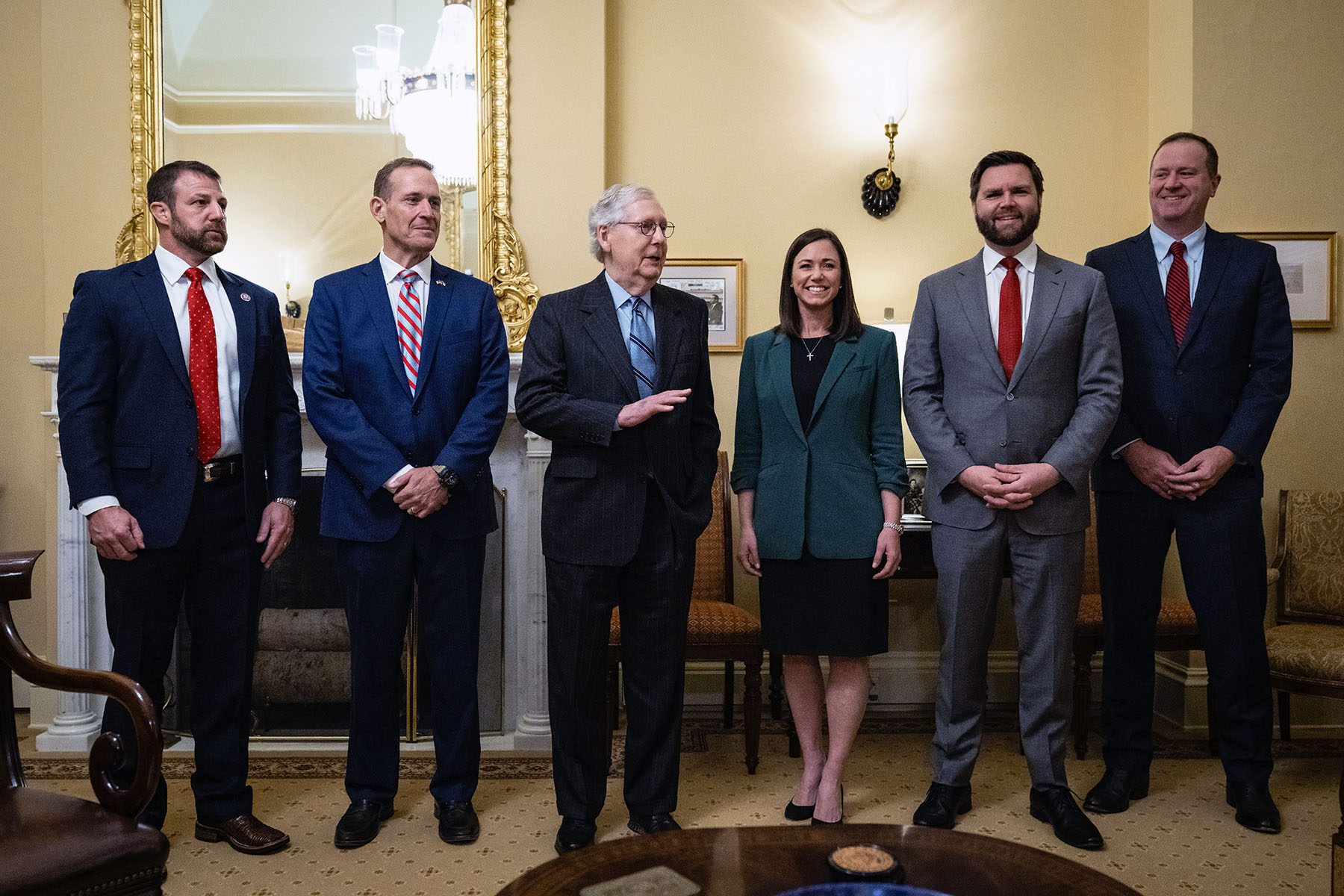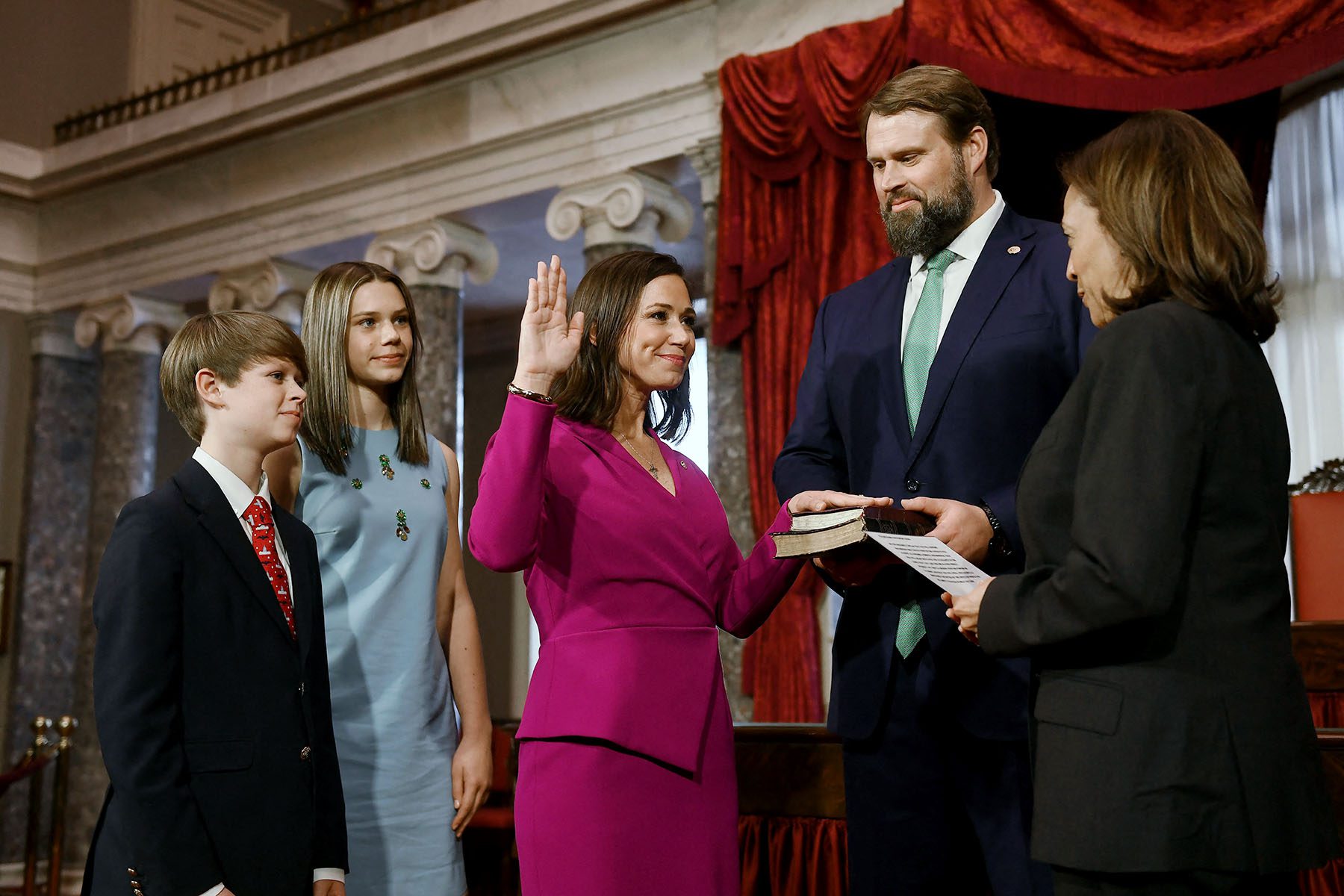We’re answering the “how” and “why” of politics news. Subscribe to our daily newsletter.
The ranks of Republican women in elected office have been growing: Groups including the Value In Electing Women (VIEW) PAC, Maggie’s List, Winning for Women and Elevate PAC, founded by Rep. Elise Stefanik, have successfully increased the number of GOP women and women of color serving in the U.S. House and state-level offices over the last several cycles.
Those groups now hope the party will learn from the success of women House candidates and take advantage of their most promising Senate map in years to elect more women to the chamber in 2024.
Experts and Republican women say the myriad pickup opportunities, combined with a more hands-on approach from Senate GOP leaders in primaries, present a unique opportunity for women to make progress in the upper chamber. But it’s not guaranteed that more involvement from party leaders would lead to more women getting elected in competitive races. In the sole 2024 primary race where the Senate GOP campaign arm has weighed in so far, the team backed a man candidate.
“This will be a moment for them to step up in those races because you’re talking about some really flippable places for Republicans,” Debbie Walsh, president of the Center for American Women and Politics (CAWP) at Rutgers University, said of Republican women’s groups. “These are places they think that Republicans think they have a real shot at — and the reality is that women might not rise up as the obvious candidates.”
The National Republican Senatorial Committee (NRSC), the official campaign arm of Senate Republicans and its new chair Sen. Steve Daines, are breaking from a tradition of neutrality in primaries and taking a more hands-on role in influencing their outcomes after the party’s disappointing showing in 2022. Many Republican strategists, and those focused on electing more women, say it’s a welcome — and overdue — development — and one that could lead to more women in the Senate.
“I’ve been doing this a long time and I have no desire to win participation trophies,” said Julie Conway, executive director of VIEW PAC, the unofficial campaign arm of Republican women in Congress. “If the NRSC has to put their thumb on the scale to say, ‘Look, we’ve got a better candidate here, a candidate who is going to bring us success in November,’ I think it’s necessary.”
The NRSC did not respond to requests for comment on whether it would actively seek to recruit more women in 2024 races. But Conway said the NRSC’s new willingness to engage in primaries focusing on candidate quality could lead to more institutional support for GOP woman candidates.
Woman candidates are often successful, she said, because “most don’t get in unless there’s a path, and they’ve been very thoughtful about what that path is.”
“In the last three cycles, more than ever, a light switch flipped and people finally realized that, wow, Republican women, when they run, are really good candidates,” she said. “Because by the time they decide to become a candidate, they’ve already done all their own vetting.”
Democrats are defending 23 U.S. Senate seats in 2024, while the GOP is defending just 14, with its most vulnerable seats in Republican-leaning Florida and Texas.
Democrats will be fighting to hold on to seats in Ohio, Montana and West Virginia, three states won by former President Donald Trump, as well as in states narrowly won by President Joe Biden, including Michigan, Nevada, Pennsylvania and Wisconsin. Sen. Kyrsten Sinema of Arizona, elected as a Democrat in 2018, became an independent in December and is also up for reelection in 2024.
After a performance widely considered underwhelming in 2022, some GOP strategists say the NRSC should take a page from House Republicans, who picked up seats in 2020 and flipped the chamber in 2022 (though by a smaller margin than expected) largely by recruiting women, people of color and women of color who fit their districts.
“What has happened in the House over the last few cycles is that people finally realized that in a lot of these races, the woman is the better candidate,” Conway said.
There are now 33 Republican women in the House, more than in any Congress before, but they only make up about 15 percent of the Republican caucus, according to CAWP. Of the 25 women in the U.S. Senate, nine are Republican, including Sen. Katie Britt of Alabama, the only woman first elected to the chamber in 2022.

Republican women point to the election of Britt, an ex-chief of staff to former Sen. Richard Shelby, as a bright spot of the midterms. But the path to a statewide office is an uphill climb, especially for women who haven’t previously held elected positions or had outside support.
“There are so many qualified, excellent women that want to run and they just don’t know how, or don’t feel like they have the resources to do that,” said Tina Ramirez, a spokesperson for Maggie’s List, a grassroots organization that supports GOP women running for office.
Republican women lack an organization with the equivalent influence and financial firepower of a group like Emily’s List, which endorses Democratic women and spends tens of millions of dollars electing them through its affiliated super PAC.
“One of the biggest challenges they face is that they don’t have those kinds of outside party resources that Democratic women have,” Walsh said of Republican women. “That is really a hindrance for them.”
Walsh said the lack of institutional backing and fundraising networks to tap into creates a catch-22. Women have a higher bar than men to prove they can win in a general election but have fewer established pipelines and networks to raise money. And without raising money, women candidates aren’t perceived as electable.
Conway also said that Republican primary voters often instinctively perceive a woman candidate as more moderate than a man opponent.
“If all you saw were their résumés and they were 100 percent the same, people would assume that the male was more conservative,” she said. “And in a Republican primary, that might be all they need.”
The NRSC’s involvement in primaries could run in either direction for women and differ state by state.
Already, the committee indicated its support for Rep. Jim Banks in the open race to replace Republican Sen. Mike Braun of Indiana after another potential candidate, Mitch Daniels, took himself out of the running. Second-term Rep. Victoria Spartz, who had also considered a Senate run, announced she wouldn’t run for the Senate or for reelection to her House district after the NRSC backed Banks.
It’s unclear how much of Spartz’s decision to step aside, which she said was because of wanting to spend more time with her daughters, was spurred by the NRSC supporting Banks. A representative for Spartz did not respond to a request for comment.
While Banks has sewn up the GOP nomination in Indiana, the 2024 Senate fields are still taking shape in most other states. Nikki Snyder, a member of the state Education Board in Michigan, has jumped into the Republican primary for the open Senate seat in the state. Rep. Lisa McClain, state Sen. Ruth Johnson and 2022 gubernatorial nominee Tudor Dixon have also been floated as potential GOP contenders.
In addition to getting more women elected to the Senate in 2024, advocates for Republican women want to build a robust bench of women elected offices who will be at the top of the list when statewide offices come up for election.
“Success begets success and in the last few cycles especially, we’ve demonstrated that when women run, they win,” Conway said.
They’re also energized by the potential of Nikki Haley’s presidential run to inspire even more women candidates.
“There’s a learning curve — politics is nasty, and it’s complicated,” Conway said. “But I think as our bench gets deeper, we’re gonna see just more and more of this. And for me, it’s exciting.”






